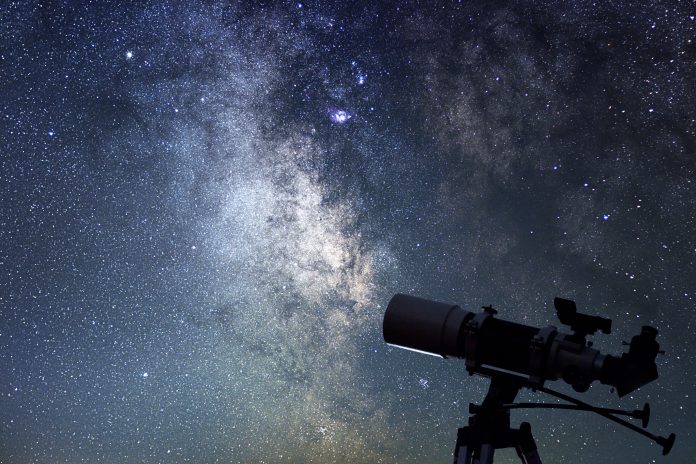Open Access Government explores the different ways that the National Science Foundation’s Division of Astronomical Sciences is encouraging wider participation and diversity in U.S. research
In July 2020, Dr Ralph Gaume was appointed as Division Director for the Division of Astronomical Sciences (AST), with the overriding mission to support the forefront of research in ground-based astronomy and help ensure the scientific excellence of the U.S. astronomical community. As part of the National Science Foundation (NSF), AST feeds into their wider goals of propelling the nation forward through advancing fundamental research in all fields of science and engineering. In order to sustain the U.S. as a global leader in research and innovation, the NSF provides both facilities and funding which reaches all 50 states.
Each year, NSF receives more than 40,000 competitive proposals and makes about 11,000 new awards. Those awards include support for cooperative research with industry, Arctic and Antarctic research and operations and U.S. participation in international scientific efforts. With a fiscal year 2020 budget of $8.3 billion, NSF funds grants to nearly 2,000 colleges, universities, and institutions. One example of this is the NSF’s Graduate Research Fellowship Program (GRFP), which recruits, recognises, and supports individuals early in their graduate training in science, technology, engineering, and mathematics (STEM fields). GRFP was NSF’s first-ever program and has supported graduate students every year since 1952. Its overall goal is to help ensure the quality, vitality, and diversity of the scientific and engineering workforce of the United States. There are two primary aims which come together to achieve this:
- To select, recognise, and financially support individuals who have demonstrated the potential to be high achieving scientists and engineers, early in their careers.
- To broaden participation in science and engineering of underrepresented groups, including women, minorities, persons with disabilities, and veterans.
The latter of these – the need for diversification – is something that is very important not only to NSF but to AST, as this division specifically places great importance in encouraging a broad understanding of the astronomical sciences by a diverse population of scientists, policy-makers, educators, and the public.
Some of the funding opportunities to help broaden participation include:
Partnerships in Astronomy & Astrophysics Research and Education (PAARE)
The objective of PAARE is to enhance diversity in astronomy and astrophysics research and education by stimulating the development of formal, long-term, collaborative research and education partnerships among minority-serving institutions and partners at research institutions, including academic institutions, private observatories, and AST-supported facilities.
UCSC AKAMAI
The Akamai Workforce Initiative – often shortened and simply called “Akamai,” which means clever, smart, or expert in Hawaiian. The initiative is dedicated to building a diverse, local workforce in Hawaii and advancing college students from Hawaii into the STEM workforce. Akamai has a long history of partnering with telescopes and supporting the growth of astronomical and remote sensing facilities in Hawaii, but it also broadly contributes to the development of a strong and diverse technical workforce in a wide range of fields.
NSF Astronomy and Astrophysics Postdoctoral Fellowships (AAPF)
This program provides educational opportunities for Graduate Students. NSF Astronomy and Astrophysics Postdoctoral Fellowships provide an opportunity for highly qualified, recent doctoral scientists to carry out an integrated program of independent research and education. Fellows may engage in observational, instrumental, theoretical, laboratory or archival data research in any area of astronomy or astrophysics, in combination with a coherent educational plan for the duration of the fellowship. The program supports researchers for a period of up to three years and is intended to recognise early-career investigators of significant potential and to provide them with experience in research and education that will establish them in positions of distinction and leadership in the scientific community.
Research that AST supports span many areas, one recent example, in particular, being the new view of nature’s oldest light, which has added a fresh twist to the debate over the age of the universe. In July 2020, astronomers at the NSF Atacama Cosmology Telescope (ACT) took a fresh look at the oldest light in the universe. These new observations, plus a bit of cosmic geometry, suggest that the universe is 13.77 billion years old, and add fuel to a controversy that has arisen in recent years between two different ways of measuring the age of the universe. Richard Barvainis, a program director in the AST stated that these findings will need to be checked and corrected before an agreement is reached and that it “is part of the excitement of scientific research — to find the right answers to fundamental questions.” Without the AST, this would not be possible.
Another example of cutting-edge research is that Astronomers have recently found an elusive target hiding behind dust after acting on a hunch. They now have likely resolved a mystery about young, still-forming stars and the regions rich in organic molecules closely surrounding some of them. The scientists used the NSFs Karl G. Jansky Very Large Array to reveal a region that had previously eluded detection, and that revelation has now answered a long-standing question.
The future aims of AST are to maintain this level of research through a diverse lens, so they can continue making discoveries in Astronomy such as those mentioned above, and keep feeding into the goals of the NSF to support basic research and people to create knowledge that transforms the future. This type of support is a primary driver of the U.S. economy, Enhances the nation’s security and advances knowledge to sustain global leadership.











